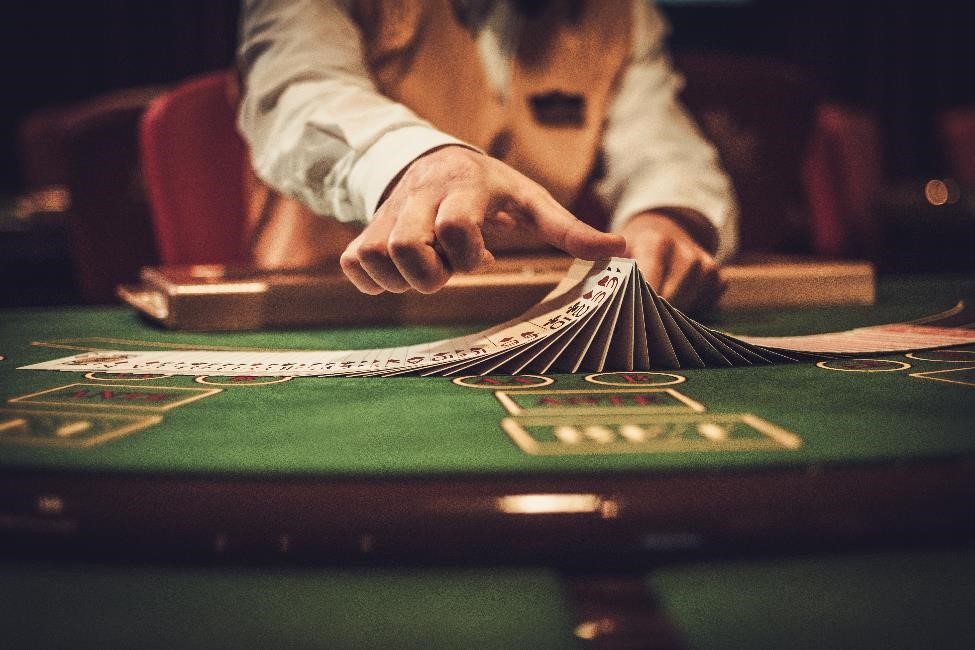

Let’s examine three ways these eight hands (8-8, 7-7, 6-6, 5-5, 4-4, 3-3, 2-2 and A-Q ) might be played in No Limit Hold ‘em (NLH). These are the kinds of hands you want to take a flop with and are hands worth one raise before the flop, or even making the first raise yourself. If you are going to raise with one of these hands, raise about the size of the pot and hopefully win when everyone folds. Ideally, you want to call a small raise (or the initial blind bet) or make the pot size raise before the flop, and then hit the set on the flop to win a huge pot.
Again, my theory is that you want to call a small raise or make a pot-size raise before the flop to try to win the pot before the flop.
Frank Henderson, a noted player on the poker circuit, has a theory about this type of hand to call one raise before the flop (on this we both agree.) But Frank doesn’t like to try to win the pot before the flop with these types of hands by raising the pot before the flop. Rather, he likes to just call before the flop and hope to win a big pot when he flops his set. So Frank wants to try to lose small with these hands when he misses them, and win big if he hits them, by keeping other players in the pot before the flop. The only downside is that he doesn’t win as many pots before the flop but maybe this is OK, because the pots you win with a raise before the flop tend to be pretty small anyway. The megalomaniac theory of playing these types of hands is always to raise or reraise before the flop. These megalo players are super-aggressive and will try to win every pot they play before the flop. If a megalo gets a hold of some chips, he can make the other players at his table miserable with his constant raising and reraising. I would rather back a megalo player than a supertight player any day in a NLH tournament. The megalos tend to do well because they’re always picking up chips; but in side games they tend to get crushed as the more patient pros sit back and wait for the megalos to overplay their hands against them. Megalos tend to do better in NLH tournaments than in side games because they steal a ton of antes in NLH tourneys.
So, we have three different NLH theories for playing these hands. I rarely play the megalo theory because my opponents expect me to play that way…unless there is a table of mice. Rather, I play the theory I laid out above and Frank Henderson’s theory. In other words, most of the time I will put in the first raise with these types of hands, but sometimes I’ll just call with them before the flop.
BEGINNERS: TRAPPING WITH THE TOP FOUR HANDS
The Trapping theory for NLH applies mostly when you have A-A or K-K. Some players like to just call someone else’s raise or reraise before the flop in the hope that the move will trap someone into giving them all his chips after the flop. This is a dangerous theory, with a risk-reward hazard that any expert in game theory would love to look at! Most of the time you should go ahead and reraise with A-A or K-K and hope your opponent either: moves all-in right there with something like J-J or Q-Q (which makes you 4 ½-to-1 favorite) or folds his hand. Reraising is the safe way to play because it prevents you from losing all your chips in some situations but you’ll get less action on these hands. When trapping works out, you look brilliant; but when you bust yourself trapping someone, you look like an idiot!
The trap works like a charm when you have A-A or K-K and your opponent has a hand like A-J, and the flop is 2s-2h-Jh. You may force your opponent with A-J into losing all his chips in this scenario because he may think you have K-J or a flush draw.
Trapping with aces can go badly for you, however, when your opponent hits his flop, as when he raises with Qd-Kd and you just call and the flop is K-Q-4: now you can kiss your chips good-bye. I rarely trap with any big hand, but some circumstances encourage me to try it.
By: Phil Hellmuth, Jr.
Phil Hellmuth Jr. is an eleven time World Series of Poker Champion leading all poker players in the world. He has two New York Times best-seller books-Play Poker Like the Pros and Bad Beats and Lucky Draws both of which can be found at Amazon.com. This column is an excerpt from Phil Hellmuth’s Texas Hold ‘em. Phil’s books, blog, tips and more can also be found at PhillHellmuth.com. Chat and play with Phil at UltimateBet.com and learn about his new cell phone game at HellmuthHoldem.com
